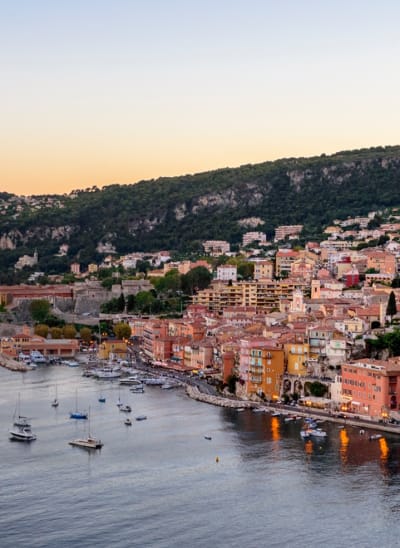5 Big Takeaways from Cannes
Our executives share their insights on this year’s Festival of Creativity.

Every June, the industry’s top creatives converge in the south of France to celebrate their best work. But Lions are only part of the fun. The rest of the magic happens during the inspiring programming held throughout the Festival of Creativity, with discussions spanning everything from tech-backed innovations (you guessed it—AI) to DE&I and sustainability.
Fresh off the experience, our executives share their impressions on how creativity is forging deeper connections between brands and consumers, shaping a better world, and highlighting where there’s still more work to be done.

Winning creative combined the latest tech with purpose
Creative commerce continues to succeed when aligned to a brand’s unique purpose and goals. For example, Renault’s Plug Inn applies an Airbnb-like business model to e-vehicle charging ports—a winning combination of sustainability and a reimagining of tech-enabled brand experiences. Combining social issues with reimagined tech allows brands to stay relevant, align brand purpose to causes larger than their own, and deliver on conversion goals.
The spotlight at Cannes was once again on the latest advancements in tech platforms. While AI dominated the conversations throughout the week, the grand prix winners pushed the boundaries of text, calling, and push notification technology—like the Korean National Police Agency’s Knock Knock that allows domestic-violence victims to make silent emergency calls—transforming these simpler tech experiences into something truly imaginative. This speaks to the way the industry has evolved, irrespective of the promises of developments like Web3 and artificial intelligence.
—Josh Campo, CEO
AI will build deeper relationships between brands and consumers
AI was a topic at Cannes last week, even when it wasn’t. Two sessions on topics unrelated to AI began with, “We know it’s a subject on everyone’s mind, but we’re not going to going to talk about AI today.” But those with a bolder perspective on AI took a very specific point of view. One Lions judge, sharing the rationale behind a particular category’s work being awarded the highest award given, cited the judges’ agreement to award work that did not rely heavily on AI, data, or technology.
Regardless of position, every session, discussion, or piece of awarded work reflected the possibilities AI will bring in our future. The impact specifically to the commerce landscape will allow us to build deeper relationships with creativity by better serving the needs of consumers. More effective content and creative, optimized by data and AI, can drive growth for brands, retailers, and agencies. Bringing optimized content together with retail media networks or to serve an unmet need in retail experiences, AI will ultimately build deeper relationships between brands and consumers.
—Jessica Hendrix, Head of Retail Experience at Razorfish and President of Saatchi & Saatchi X

Gender inequality was still on display
Women now make up nearly half of the advertising industry. But judging from the Cannes panels this year, you wouldn’t have known it. Apart from women-centered discussions organized by the likes of the Female Quotient and She Runs It, most of the panels were dominated by men. As an industry, we’ve come a long way in our DE&I efforts, but we still need to grab more seats at the table for women. Of the almost 50% of us in the industry, just a small number hold leadership positions. (According to a report by CreativeX, a similar gender disparity was also evident in ads last year, with men cast in professional roles 73% more often than women compared to the previous year and 30% more often in leadership roles.)
A Cannes bright spot was a CMO Accelerator panel led by Piedmont CMO Douwe Bergsma, TwentyFirstCenturyBrand Co-Founder and Chair Jonathan Mildenhall, and Ulta CMO Michelle Crossan-Matos, who effectively delivered a clarion call to the next generation of CMOs—women included—to bring their authentic selves, whatever that might look like, to the job.
—Dani Mariano, President
Brands will continue tapping communities through creators
A topic much discussed this year was the notion of brands co-creating content with target audiences and communities as part of the rising “creator economy.” With the advancement of design technology, social media formats, and now powerful generative AI tools, the ability to execute a creative idea has been democratized like never before.
Brands have typically reached out to influencers to extend their reach among target audiences, and while influencers still have a place in campaign strategy, brands are now understanding the value of creators to connect with communities. Creators are often more in touch with the desires and needs of the people they reach and are better able to tailor content to resonate with them. Since creators often have more creative license over the content they produce, it tends to be authentic and reflect their opinion, rather than that of the brand. This makes them more likely to be trusted by their audience.
The rise of the creator economy is a step toward a new mindset of inclusive brand promotion—one that will give brands the opportunity to pay particular attention to highlighting and telling the stories of historically underrepresented communities in a direct and uninterpreted way.
–Michael Burgess, Chief Client Officer

Creativity is driving a more sustainable future
In the vibrant, inspiring, and conversation-packed Festival of Creativity, many topics and themes were discussed, but one stood out to me, and it wasn’t Generative AI—it was sustainability and how Adland is addressing it.
This issue is very important when you consider the fact that up to 1% of the global energy grid is consumed by advertising and adtech. And more data will be accumulated in the next three years than in the past 30—all of which need to be actively stored. Mix that in with increasing consumer preference for low carbon footprint businesses and you can start to see the tip of an iceberg, one that we are all precariously perched upon.
Now, one might ask if we are supporting our clients’ efforts in this space? The answer is yes. But the more interesting part of the conversation is how sustainability relates to our own industry, and how we, as creatives, agencies, networks, and holding companies are shaping a more sustainable future.
The good news? The industry is taking action across the board. There are many coalitions, initiatives and startups operating in this space. These include groups like Ad Net Zero and Clean Creatives, green media products from Scope3, and ad-filtering marketplaces like eyeo. I look forward to seeing how these groups, and our industry at large, will drive the needed changes to support a more sustainable future.
—Anthony Yell, Chief Creative Officer

